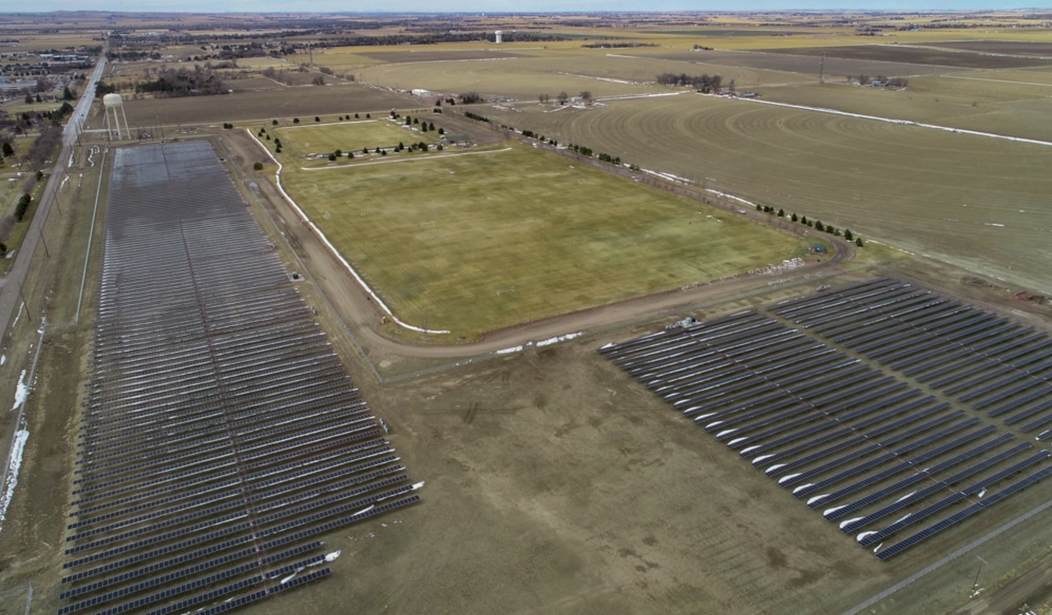There’s nothing unusual about storms knocking out the power to homes.
But usually the interruption is temporary. A few downed powerlines get fixed by some brave and burly men (thank you guys!) and the lights come back on.
Occasionally a terrific storm can knock power out for a week or even longer. Tornados can do tremendous damage over large areas and present quite a challenge. When a tornado hit my neighborhood (yes, houses all around me were destroyed, but we only suffered some cosmetic damage–go figure…) it took about 10 days to get power back on.
Even in May, its gets pretty cold here in Minnesota, so that sucked.
But it’s pretty unusual to hear about a hail storm knocking out over 5 Megawatts of power from production permanently. That’s enough to power 2000-5,000 homes, supposedly.
Baseball-sized hail took out a 5.2-megawatt solar farm in Scottsbluff, Nebraska, on Monday, as part of a giant supercell thunderhead that moved across eastern Wyoming and into Nebraska. https://t.co/Ol2GboA6WO
— Cowboy State Daily (@daily_cowboy) June 27, 2023
Baseball-sized hail took out a solar farm in Scottsbluff, Nebraska, on Friday.
The hail shattered most of the panels on the 5.2-megawatt solar project, sparing an odd panel like missing teeth in a white smile.
Wyoming has only one commercial-scale solar farm, but a second project is under construction south of Cheyenne.
The Federal Emergency Management Agency ranks this area in its the highest category for hail risk on the national index.
Don Day, Cowboy State Daily meteorologist, said the hail would have reached terminal velocity during its descent, which is the maximum speed an object will reach when falling. The hail would have likely struck the panels going 100 to 150 mph.
Boom! Put a solar farm in a region with the highest hail risk in the nation and, suprise!, hail destroys the solar farm.
Gee, I wonder if federal and state subsidies had any impact (pun intended) on the decision to build the farm?
Of course the destruction of this solar farm isn’t quite the disaster that it seems, given that solar farms aren’t exactly as reliable as advertised and nobody really relies on that power exclusively. At least I hope not, because in that case they are screwed big time.
In reality solar farms are little more than money sinks and opportunities for virtue signaling–and an excuse to close actually useful fossil fuel power plants that keep people warm, food cold, and the lights on.
The solar farm in question–the Scottsbluff Solar Farm–existed pretty much for the sole purpose of virtue signaling (and scooping up some very nice subsidies from the government). I don’t know the precise number of megawatt hours the farm actually produced, but I guarantee it was nothing comparable to 5.2 Megawatts from the capacity of a reliable power plant. Instead, it maxed out at 5.2 Megawatt at peak production, but average production (including nights) was a small fraction of that.
It existed for show, not actual power.
So in reality, 5.2 Megawatts of power production capability wasn’t wiped off the map, but merely the pretense that the people who signed up to get power produced at the “plant” are losing bragging rights. It’s not like the electrons were segregated from those moving from coal plants.
Community solar farms aren’t the environmentally friendly alternative they are presented to be. Deadly elements leech into the land, the panels aren’t really recyclable, and the power they generate is scant and unreliable. And, apparently, a bad storm can wipe out the investment in a minute or two.
But they do a nice job helping people pretend they are saving Gaia.








Join the conversation as a VIP Member